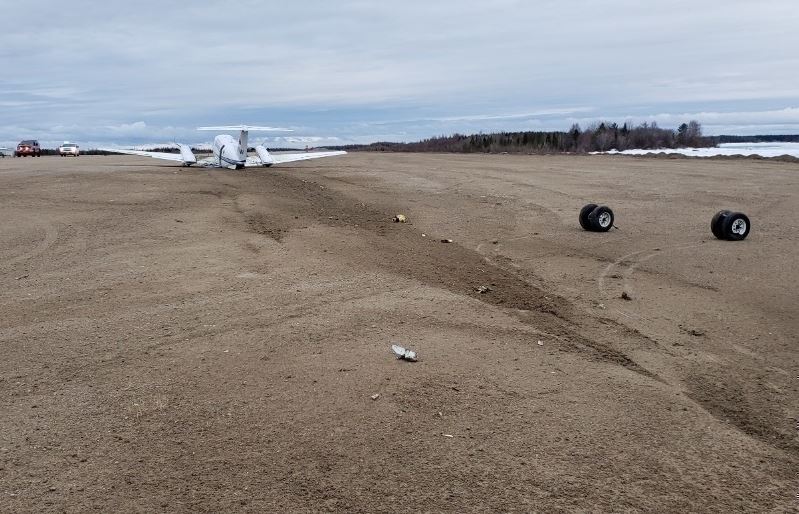The Transportation Safety Board says the pilots of a medevac plane had many chances to notice there wasn’t enough fuel before they were forced to make an emergency landing in northern Manitoba.

The board’s report released Monday said the plane was expected to fly to Rankin Inlet, Nunavut, from Winnipeg with a stop in Churchill, Man., in April 2019. A pilot, first officer and two nurses were aboard the Beechcraft B200 medevac operated by Keewatin Air.
The investigation found that before the plane took off, the captain asked if the aircraft was ready for flight, and the first officer replied that it was, not recalling the aircraft needed fuel.
“As a result, the aircraft departed Winnipeg with insufficient fuel on board to complete the planned flight,” the report said.
While in the air, the pilots didn’t check the fuel gauges during periodic scans of the cockpit, the report said. The report said they became startled when the fuel pressure warning light turned on.
The Transportation Safety Board’s investigator-in-charge of the incident, Allen Barrett, says part of the confusion was because the pilot in command – typically seated on the left – was sitting on the right-hand side, while the captain-in-training was seated on the left.
“So we have a confusion where the roles weren’t clarified between the two, where the guy sitting on the left … while he would normally be on the right side of the aircraft, looking at the fuel gauges wouldn’t normally be part of his routine,” Barrett says.
The pilots declared a fuel emergency with air traffic control and began an emergency descent in Gillam, Man., about 735 kilometres north of Winnipeg.
“Still feeling the effect of the startle response, the captain quickly became task saturated, which led to an unco-ordinated response by the flight crew, delaying the turn towards Gillam and extending the approach,” the report said.=
“In aviation terms we call that a ‘startle effect,'” says Barrett.
- Posters promoting ‘Steal From Loblaws Day’ are circulating. How did we get here?
- Canadian food banks are on the brink: ‘This is not a sustainable situation’
- Video shows Ontario police sharing Trudeau’s location with protester, investigation launched
- Solar eclipse eye damage: More than 160 cases reported in Ontario, Quebec
“All of a sudden your reality is not what you had perceived it to be up until that point… your workload has increased exponentially and you almost go into a mental fog trying to pick what are your priorities and how to handle the situation.”
As the plane was landing, the engines lost power because there was not enough fuel and the aircraft was unable to make it to the runway.
The pilots were forced to land the plane on the frozen surface of a lake short of the runway.
“Given what they were faced with, they came remarkably close. Had the remaining engine functioned for – I dare say – another 15 seconds, they would have made it to the runway,” Barrett says.
The landing gear legs were torn off by the impact and there was other substantial damage to the plane. None of the people on board was injured.
The Transportation Safety Board report said Keewatin Air did an internal investigation into the crash and issued safety bulletins to pilots and flight co-ordinators about checking fuel.
— With files from Will Reimer.










Comments